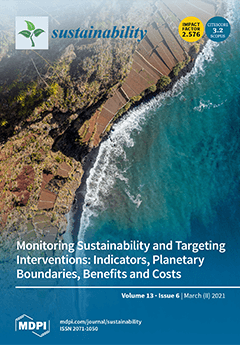Open AccessPerspective
Choices We Make in Times of Crisis
by
Patrick O. Waeber, Natasha Stoudmann, James D. Langston, Jaboury Ghazoul, Lucienne Wilmé, Jeffrey Sayer, Carlos Nobre, John L. Innes, Philip Fernbach, Steven A. Sloman and Claude A. Garcia
Cited by 11 | Viewed by 11587
Abstract
We present a new framework that allows understanding those we deem irrational in the climate debate. Realizing if the issue is one of information, beliefs, values or means opens the door for more constructive dialogue. Decision-makers diverge in their responses to the urgent
[...] Read more.
We present a new framework that allows understanding those we deem irrational in the climate debate. Realizing if the issue is one of information, beliefs, values or means opens the door for more constructive dialogue. Decision-makers diverge in their responses to the urgent need for action on climate and biodiversity. Action gaps are fueled by the apparent inability of decision-makers to respond efficiently to the mounting threats described by scientists—and increasingly recognized by society. Surprisingly, with the growing evidence and the accumulation of firsthand experiences of the impacts of environment crises, the gap is not only a problem of conflicting values or beliefs but also a problem of inefficient strategies. Bridging the gap and tackling the growing polarization within society calls for decision-makers to engage with the full complexity of the issues the world is facing. We propose a framework characterizing five archetypes of decision-makers to help us out of the current impasse by better understanding the behavior of others. Dealing with the complexity of environmental threats requires decision-makers to question their understanding of who wins and who loses, and how others make decisions. This requires that decision-makers acknowledge complexity, embrace uncertainty, and avoid falling back on simplistic cognitive models. Understanding the complexity of the issue and how people make decisions is key to having a fighting chance of solving the climate crisis.
Full article
►▼
Show Figures





